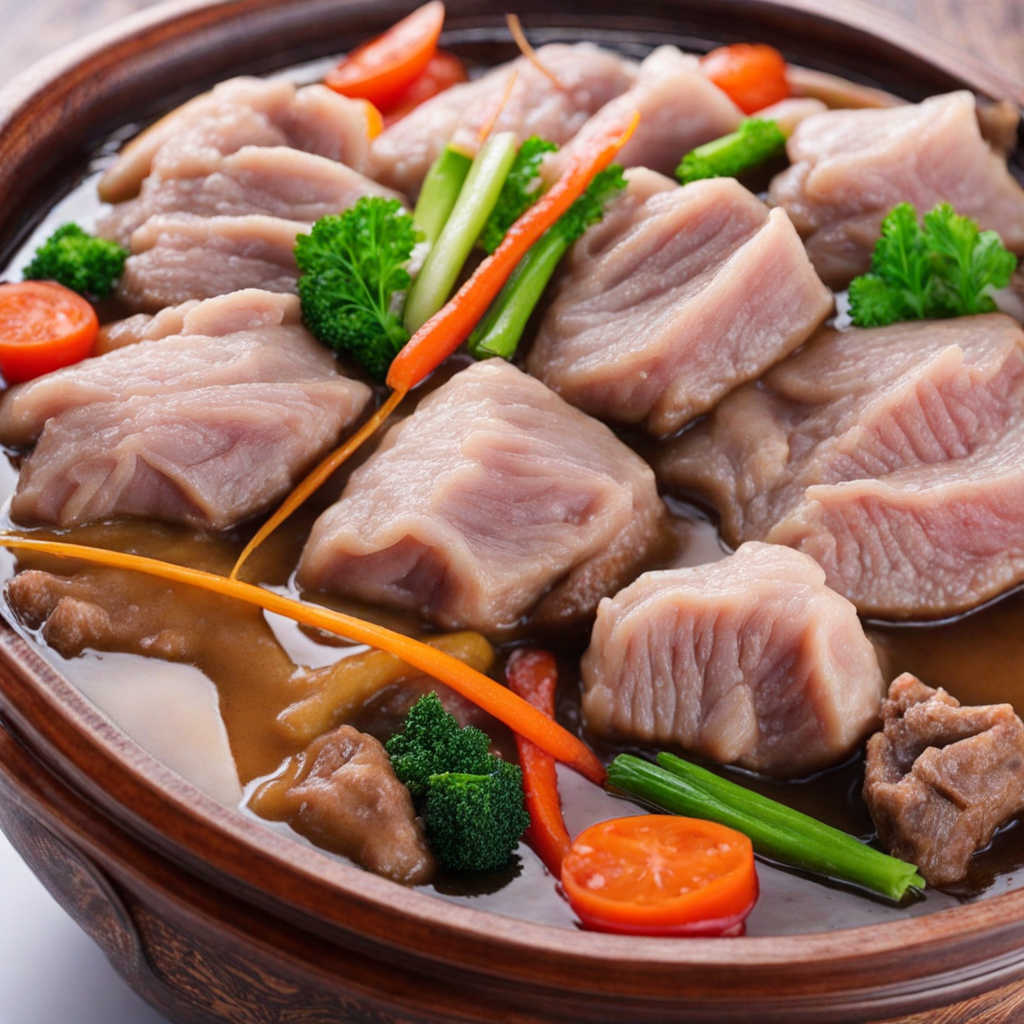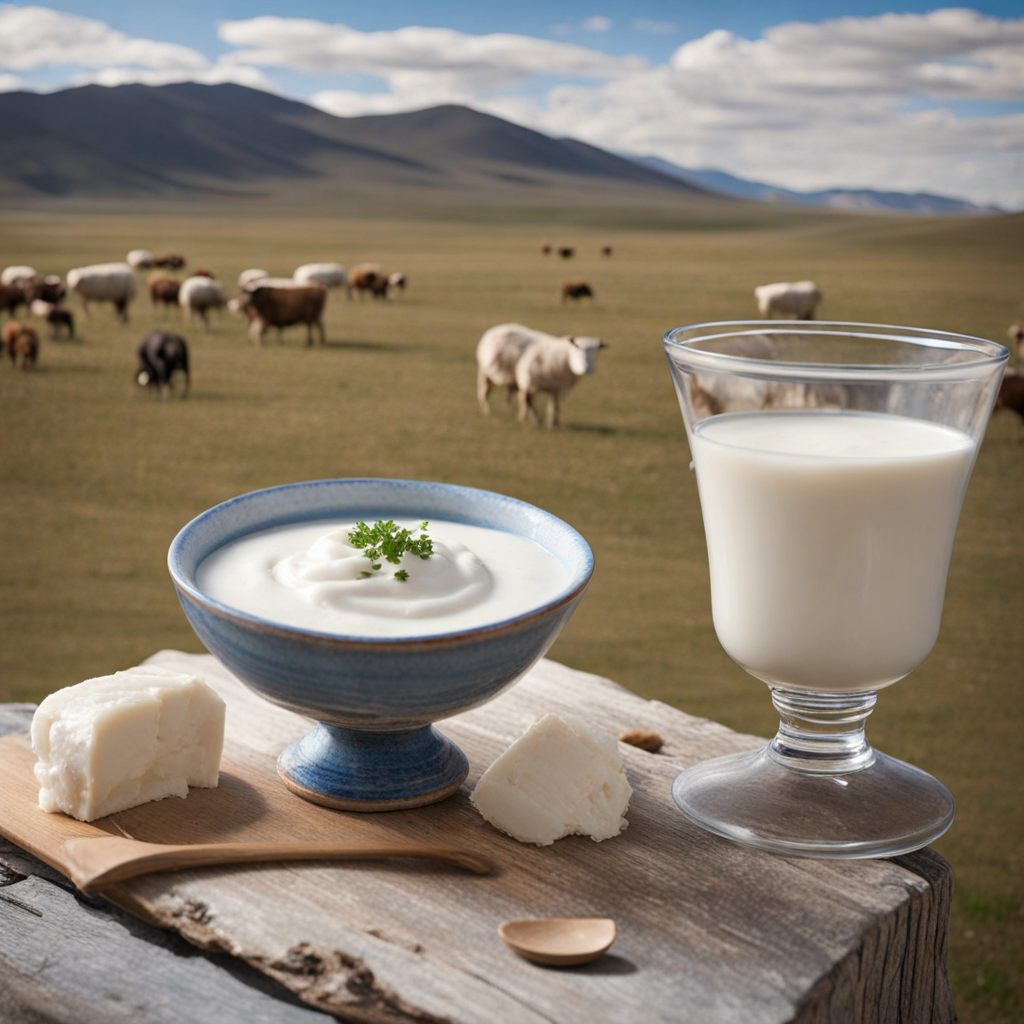Byaslag
Byaslag is a traditional Mongolian dish that showcases the country's rich culinary heritage, combining simplicity with robust flavors. This dish primarily consists of fermented dairy products, particularly the rich and creamy consistency of airag, which is fermented mare's milk. Byaslag is often made by churning the airag with a mixture of flour, creating a unique textural experience that is both creamy and slightly chewy. The fermentation process not only enhances the flavor but also introduces a tangy note that is characteristic of many Mongolian dairy dishes, making it a delightful accompaniment to various meals.
The preparation of Byaslag often involves local grains, such as barley or wheat, which are mixed into the airag to create a dough-like consistency. This dough is then shaped into small pieces and can be enjoyed as a snack or served alongside hearty meat dishes. The incorporation of local ingredients ensures that Byaslag reflects the pastoral lifestyle of Mongolia, where nomadic herders rely on their livestock for sustenance. The dish is often enjoyed in communal settings, emphasizing the importance of sharing and hospitality in Mongolian culture.
How It Became This Dish
The History of Бяслаг: A Culinary Gem of Mongolia Bяслаг, pronounced as “byslag,” is one of the quintessential foods that embody the rich culinary heritage of Mongolia. Often referred to as "Mongolian cheese," this traditional dairy product is not just a staple in the Mongolian diet; it is a symbol of the country's nomadic lifestyle, cultural identity, and historical evolution. To understand the significance of бяслаг, we must delve into its origins, cultural relevance, and development through the ages. Origins of Бяслаг The roots of бяслаг can be traced back to the ancient nomadic tribes of Mongolia, who relied heavily on animal husbandry for their sustenance. The Mongolian steppes, with their vast grasslands, provided an ideal environment for herding livestock such as sheep, goats, yaks, and camels. These animals were not only sources of meat but also vital for their milk, which formed the basis of the Mongolian diet. Traditionally, bяслаг is made from the milk of these animals, particularly from yaks and cows. The process of making бяслаг is relatively simple yet requires skill and patience. The milk is typically boiled and then allowed to curdle by introducing a natural enzyme or warming it to a specific temperature. Once curdled, the curds are pressed to remove excess whey and then shaped into blocks or rounds. The final product is often dried in the sun or air-dried, resulting in a firm texture and a distinct flavor. Historically, the nomadic lifestyle of the Mongolian people necessitated the preservation of food. Bяслаг, with its long shelf life, became an essential food item that could be easily transported during migrations. It served as a crucial source of protein, particularly during harsh winters when fresh food was scarce. Cultural Significance Бяслаг is not just a food item; it holds profound cultural significance for the Mongolian people. It is deeply embedded in the customs and traditions of the nomadic tribes, reflecting their relationship with the land and livestock. The making of бяслаг is often a communal activity, bringing families and communities together. It is a time for storytelling, sharing knowledge, and reinforcing social bonds. In Mongolian culture, dairy products are considered sacred, and бяслаг is often offered to guests as a symbol of hospitality. It is customarily served with tea or as a side dish during meals, showcasing its versatility. The taste of бяслаг can vary depending on the type of milk used and the method of preparation, ranging from mild and creamy to sharp and tangy. This diversity in flavor enhances its appeal and makes it a beloved component of many traditional dishes. Moreover, бяслаг has found its place in Mongolian festivals and celebrations. It is often included in the ceremonial meals during the Naadam Festival, a significant event that celebrates the "Three Manly Games" of wrestling, horse racing, and archery. The presence of бяслаг at such gatherings exemplifies its importance in representing Mongolian identity and culture. Development Over Time As Mongolia entered the modern era, the way бяслаг is produced and consumed began to evolve, though its essence remained unchanged. The introduction of modern dairy technology and practices brought new techniques to the traditional methods of бяслаг production. While many rural communities still adhere to age-old practices, some herders have started to adopt more efficient methods for milk processing, which has led to increased production and availability of бяслаг. In recent years, the popularity of бяслаг has transcended the borders of Mongolia. As global interest in diverse culinary traditions has grown, so has the appreciation for traditional Mongolian foods. Bяслаг is increasingly featured in international food festivals and culinary events, where chefs experiment with its flavor profile, incorporating it into contemporary dishes that appeal to a broader audience. This fusion of tradition and innovation has breathed new life into бяслаг, allowing it to reach new heights in culinary circles. Furthermore, the rise of health consciousness among consumers has led to an increased interest in fermented and probiotic-rich foods. Бяслаг, being a natural cheese, is often lauded for its nutritional benefits, including high protein content and essential vitamins. This aspect has positioned бяслаг favorably in the health food market, attracting those interested in traditional diets and wholesome ingredients. Conclusion Бяслаг is more than just a cheese; it is a testament to the resilience and adaptability of the Mongolian people. Its journey from the ancient nomadic tribes to the modern culinary scene illustrates the profound connection between food, culture, and identity. As Mongolia continues to navigate the complexities of globalization and modernization, бяслаг remains a cherished symbol of its heritage, embodying the spirit of a people who have thrived in harmony with their environment for centuries. In a world that often seeks the new and the novel, бяслаг stands as a reminder of the beauty of tradition and the stories that food can tell. Whether enjoyed in a traditional setting or as part of a contemporary dish, бяслаг will forever hold a special place in the heart of Mongolia, a culinary gem that continues to shine brightly.
You may like
Discover local flavors from Mongolia







